Nikon D3x Digital SLR Review
Nikon D3x Digital SLR
Nikon’s top professional DSLR is the leader of the pack
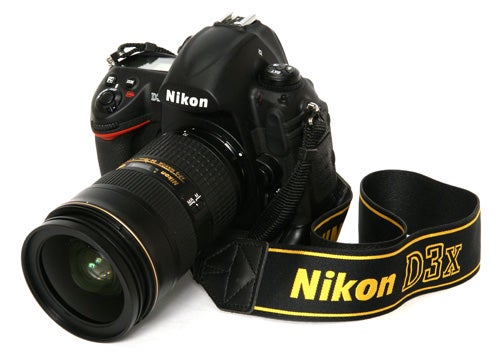
Verdict
Key Specifications
- Review Price: £4800.00
Maybe it’s just a bloke thing, but whenever I’m out testing a new camera I’m always acutely aware that other camera users, or at least the male ones, are sizing up the gear that I’m using to determine our relative positions on the social ladder of camera status. It’s particularly noticeable with DSLR users. If I’m out testing a compact camera or even a super-zoom, DSLR owners tend to give me mildly patronising looks, as though to say ””You’re using a tripod with that little thing? How cute.””
Similarly if I’m using some new entry-level digital SLR I tend to notice sidelong glances of disparaging smugness from owners of more expensive mid-range models. Usually I pay no attention to such things; we are, after all, professionals. However today I will admit to a moment of sweet, sweet revenge against this small but personal annoyance.
I was in Sidmouth shooting my usual detail test shots of the seafront with a couple of new DSLRs. The viewpoint where I stand to take that particular shot is popular with tourists at this time of year, and as usual there were a couple of people there snapping the same view. One guy had an older Olympus super-zoom, but the other was using a Canon EOS 40D and the two of them had clearly already established their relative social positions.
The first camera I was testing was an entry-level Sony which I’ll be reviewing next week, and I immediately noticed a slightly envious glance from super-zoom user and the usual annoyingly smug look from the Canon owner. I let him enjoy his illusion of superiority while I finished taking shots with the Sony. Then I put it back in my bag and pulled out the Nikon D3x.
I swear I heard a small, strangled yelp from the 40D owner as his previous status was reversed in an instant, because he knew, and he knew that I knew, that in the world of DSLR cameras the D3x is Top Dog, the alpha male of the social order, and I couldn’t have injured his pride any more painfully if I’d peed in his camera bag. The D3x is simply the biggest, fastest and most expensive DSLR camera on the market, and even owners of the Canon EOS 1DS MkIII will nod their heads in respect. Although there’s always the Hasselblad H3DII-50, but ”nobody” talks to those guys.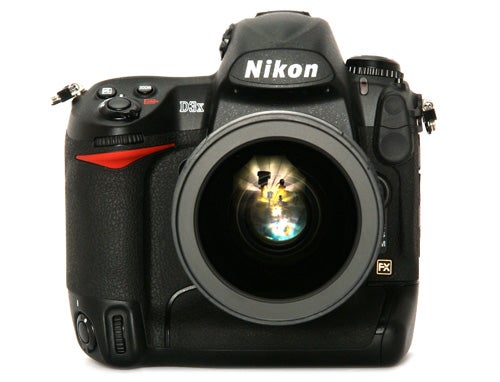
Of course that’s not the reason why someone would buy a Nikon D3x. People who buy cameras for status or because they think that owning a more expensive camera will magically make them a better photographer will usually go for the Canon EOS 5D MkII, which is still expensive but less than half the price of the D3x.
No, the only reason someone would spend £4,800 on a serious professional camera is because they are a serious professional photographer, and they need a camera that can be relied upon to take top quality pictures every time, all the time, in any situation from the backstreets of Basra to the rainforests of the Amazon. That’s the job that the D3x was designed to do, and doing anything less with it would be a waste.
The Nikon D3x was launched in December 2008 as a higher resolution update of the already successful D3, launched the previous year. It replaces the D3’s full-frame 12.1-megapixel FX format CMOS sensor with a 24.5-megapixel version, doubling the maximum resolution at the cost of reduced maximum frame rate (5.5fps instead of 9fps). Nikon has done this with its previous “single digit” DSLRs; launching two versions, one high-speed model for sports, news and action photographers and second higher resolution model for studio and landscape photographers.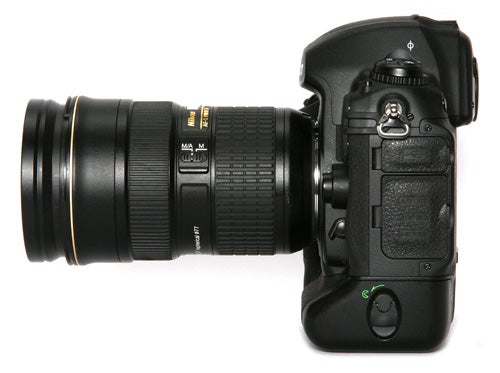
In describing the D3x it’s difficult to avoid talking in superlatives. The first and most obvious impression is the sheer size of the thing; it’s enormous even by the standard of other full-frame DSLRs. It measures 159.5 x 157 x 87.5 mm, wider, thicker and over 4cm taller than the EOS 5D MkII. It’s also extremely heavy; the camera body weighs 1,220g, and that’s not including the huge 2,500mAh Li-ion battery which weighs 180g on its own, more than most compact cameras. Add the 24-70mm f/2.8 ED lens shown here (900g) and the whole kit weighs 2.3kg, or a fraction over five pounds, which is a lot to have hanging round your neck all day. I tried it and it gave me backache.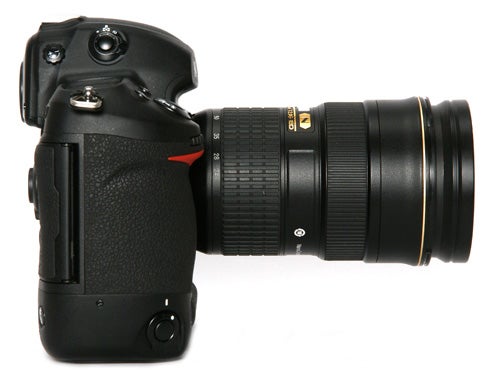
The enormous weight is due mainly to the tank-like build quality of the body. I’ve seen one of these things stripped down to just the bodyshell, and it’s a virtually solid lump of magnesium alloy. All the hatches and buttons have rubber environment seals to keep out dust and moisture, and the lower half of the body has a thick rubber coating that makes it easier to grip as well as providing some degree of impact protection. The pull-out battery module and the card slot have locking latches, and all the controls feel solid and durable.
Despite its size and weight the D3x is actually quite pleasant and easy to handle. The weight provides a very stable shooting platform, helping to reduce camera shake even when not using VR lenses, and the body shape includes a built-in vertical grip with a second shutter button, AF button and pair of adjustment wheels. The layout of the controls, while complex, is actually quite logical and easy to use. The controls are clearly labelled and operate smoothly, and while you wouldn’t want to use it for anything crucial without a thorough read of the manual, it looks a lot more daunting than it actually is. 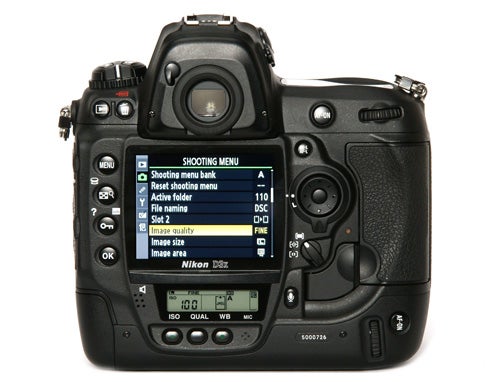
The external hardware of the camera is exceptional. The viewfinder is superb, very large and bright on a par with that of the excellent Sony Alpha A900, and the LCD monitor is also of exceptionally high quality. It has a diagonal size of three inches, a resolution of 920K dots and a viewing angle of 170 degrees. As well as the main screen the D3x also has two LCD data displays, one on the top panel for main shooting data and another smaller display just below the monitor for ISO, white balance and image quality settings. Both are back lit with a pleasant tritium-green colour.
Like most recent DSLRs the D3x features live monitor view. It has two modes, one for hand-held shooting and the other for tripod-mounted studio work. In hand-held mode the camera uses the main phase detection autofocus system, which is much faster and more accurate, but does require that the reflex mirror flips down while focusing, shutting off the live view for a moment. The tripod mode is uninterrupted, but uses a single centre-zone contrast-detection autofocus sensor, which is painfully slow to operate.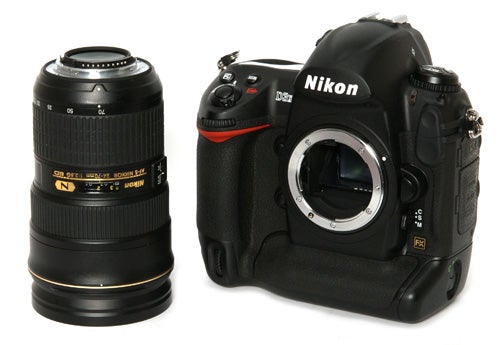
While there’s no question that live view does have its uses, the only implementation of it that I’ve seen that doesn’t seem like a bolted-on retrofit is Sony’s integrated dual sensor system, which allows uninterrupted live view with full phase-detection AF. Neither of the modes employed in the D3x are completely satisfactory by comparison; both are slow, and one completely wastes the camera’s fantastic autofocus system. Although I’ve been using the camera for a couple of weeks, I’ve found that I barely used the live view modes at all.
Shooting in viewfinder mode the Multi-CAM 3500FX autofocus system is simply brilliant. It’s the same system used in the superb Nikon D300, with 51 focusing sensors including 15 cross-type sensors that are faster, more accurate and more sensitive to light. It’s unquestionably one of the best AF systems currently available, and works quickly and accurately even in very low light levels, although below a certain light level it requires an attached Speedlight flashgun to provide an AF assist light, since the D3x has no built-in flash.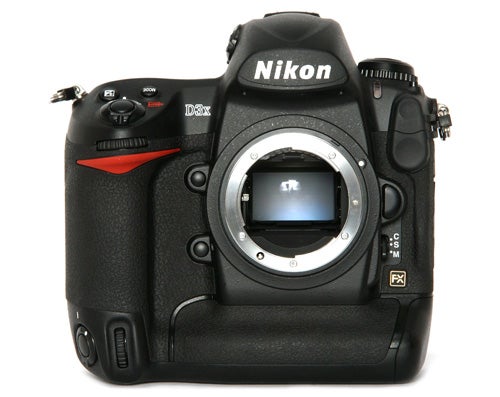
The light metering system is equally sophisticated, using a 1005-pixel RGB exposure sensor and Nikon’s 3D Colour Matrix Metering II system. It is extremely effective, coping well with difficult lighting situations such as strong backlighting or isolated spot-lit subjects. When manual bias is required the D3x offers exposure compensation of plus of minus 5EV in 1/3EV, ½EV or 1EV increments. Naturally centre weighted and spot metering are also available.
For very high contrast situations the D3x has Nikon’s Active D-Lighting system, an automatic tone compensation system that enhances shadow detail while attempting to prevent burned-out highlights. It is a very effective system, with four manual levels plus an auto mode which seems to operate reliably enough to be left switched on as default. I could detect no negative impact on image quality even in very high contrast lighting.
Although it’s not quite as fast as its older sibling the D3, the D3x still has incredible performance by any other standard. In high-speed continuous mode it can maintain over five frames a second for 21 frames even when shooting in 12-bit Raw plus Fine JPEG mode, a combined file size of around 40MB. It is possible to slow it down by switching to uncompressed 14-bit Raw mode, but even then it can maintain 2fps with a combined file size of over 52MB. Needless to say that in single-shot mode it can shoot as fast as you can press the button, with a shutter delay of less than 40 milliseconds.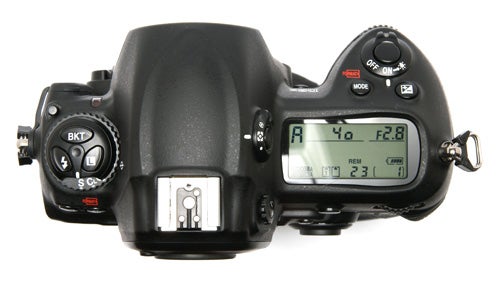
As I’ve already mentioned, the autofocus system is superb. Once it has focused it can track moving subjects even if they change their distance to the camera or pass partially behind other objects. Without the assistance of a separate dedicated flashgun it does falter in very low light, hunting backwards and forwards for a second or two, but it will find focus in surprisingly dark conditions. In good light it is the fastest autofocus system I’ve seen on any DSLR so far. It’s hard to see how anything could be faster without using de-focused temporal perception, which is of course impossible. 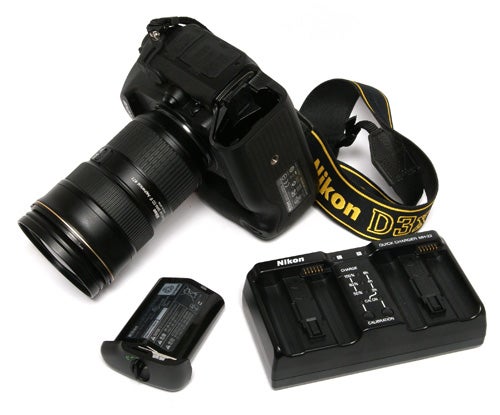
One criticism that I have seen levelled at the D3x is that it has less dynamic range and more high-ISO noise than the D3, due to the more crowded sensor. I don’t have any images from the D3 for a direct comparison, but it seems to me that this is nit-picking for the sake of it. There is a faint grain of mid-tone noise at 800 ISO, and some tonal gradients aren’t as smooth they might be, but colour rendition is excellent and while there is some loss of high-frequency detail it’s fairly minor. The results are as good as or better than any comparable camera that I’ve tried, including the Canon EOS 5D MkII and the Sony Alpha A900. I’d certainly be happy to use the D3x at 1600 ISO for professional work. 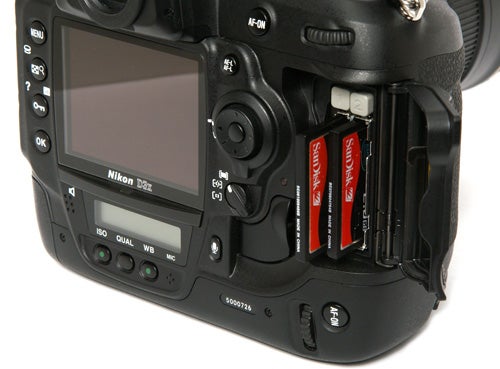
In all other respects the image quality is as near perfect as it’s currently possible to get. The level of fine detail produced by the huge sensor and a typical top-quality Nikkor lens such as the 24-70mm f/2.8G ED seen here is simply astonishing, far surpassing any APS-C DSLR. The only way you’re going to get anything much better is to mortgage your house, and possibly a couple of neighbours’ houses as well, and move up to a digital medium format camera. If you’re planning to do that, can I have your old D3x please?
”’Verdict”’
It pretty much goes without saying that the Nikon D3x is an incredibly good camera, with the kind of performance, rugged reliability, versatility and most importantly image quality demanded by the top professionals. It is big, heavy and quite breathtakingly expensive, but if you’re the sort of photographer who needs to have the very best then ask the picture agency you work for to buy you one.
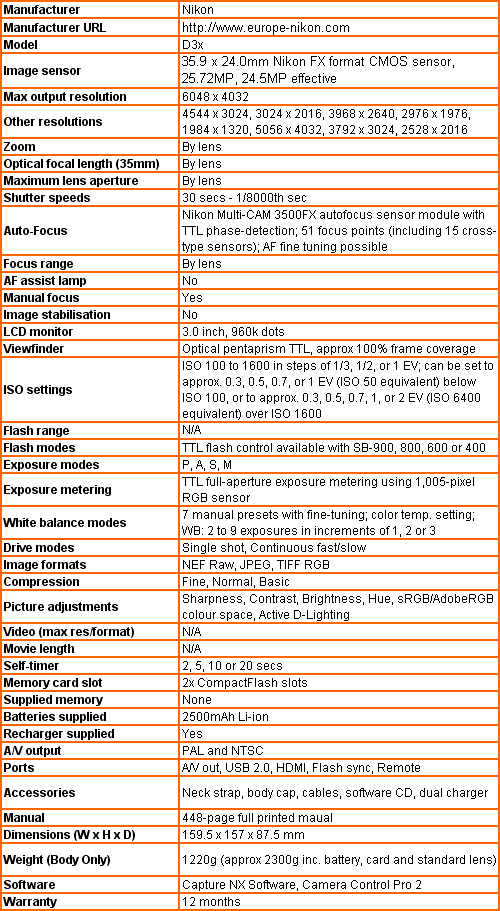
”Over the next few pages we show a range of test shots. On this page the full size image at the minimum and maximum ISO settings have been reduced to let you see the full image, and a series of full resolution crops have taken from original images at a range of ISO settings to show the overall image quality. These pictures were taken indoors using reflected natural light. ”
—-
The Nikon D3x can shoot from the equivalent of 50 ISO up to 6400 in extended mode, but I’ve only included the normal full-EV values here for the sake of brevity.
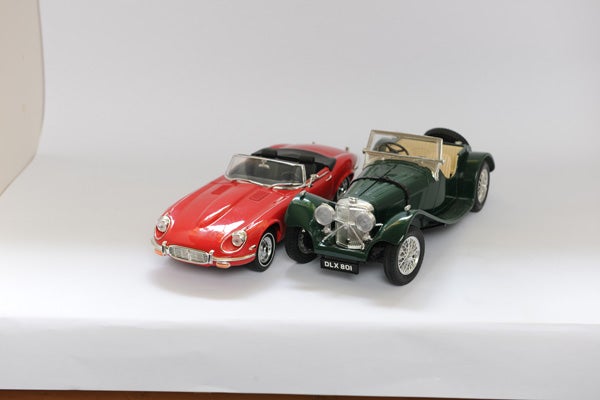
This is the full frame at 100 ISO.
—-
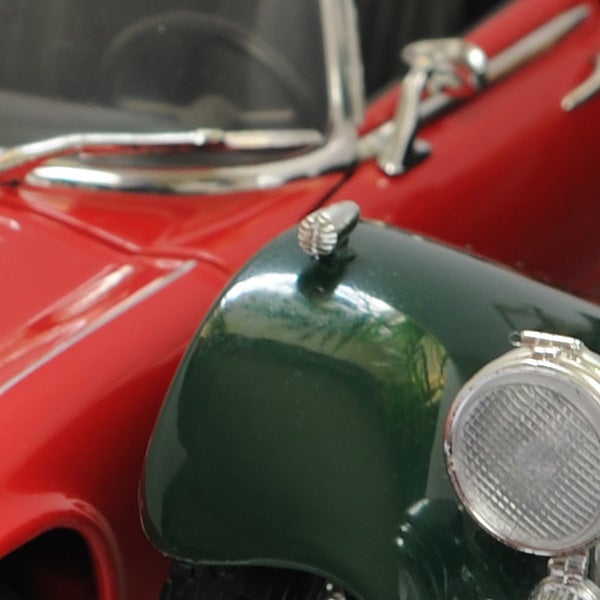
At 100 ISO the image quality is simply flawless.
—-
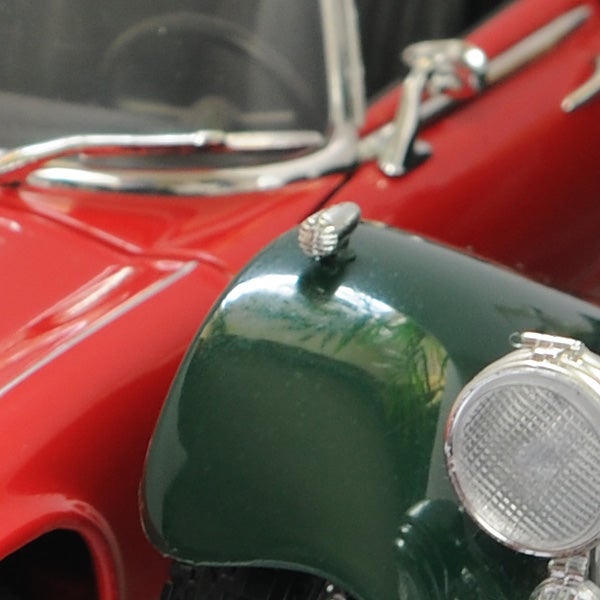
No problems at all at 200 ISO.
—-
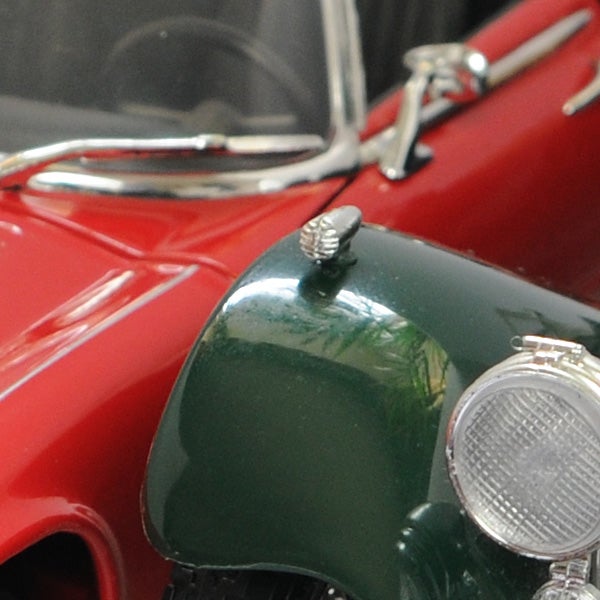
Still no noise at 400 ISO, although the tonal gradation in the red channel isn’t as smooth as it could be.
—-
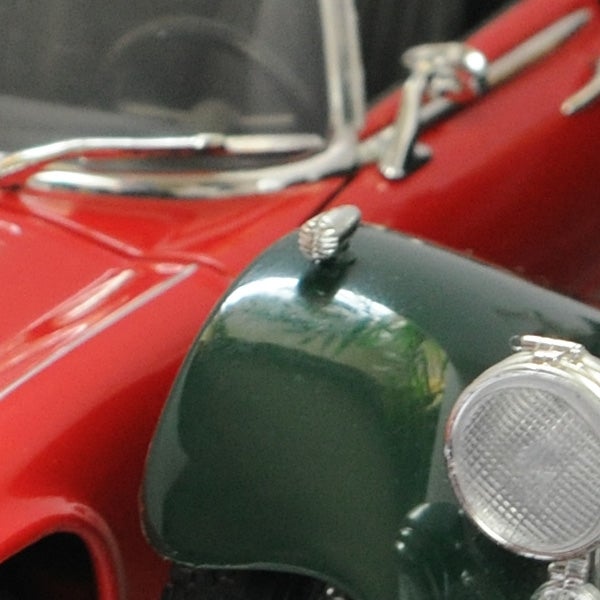
There is a faint blurring of fine detail at 800 ISO, as well as some very fine mid-tone noise, but overall picture quality is still fantastic.
—-
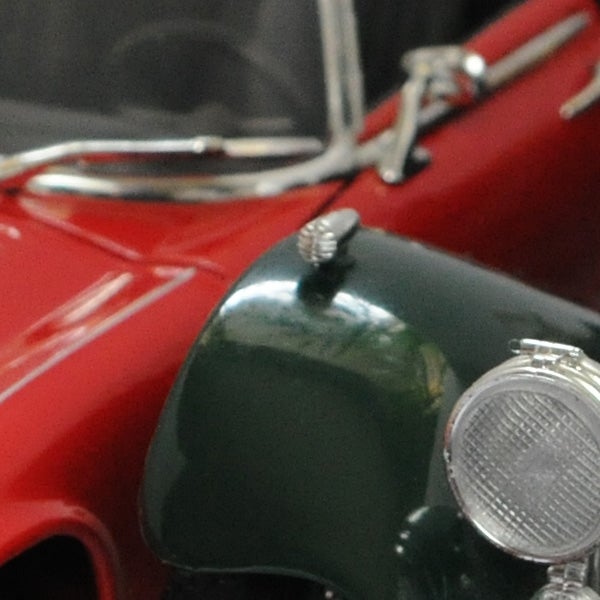
At 1600 ISO there is visible noise grain, but colour rendition is near-perfect and tonal gradients are smooth.
—-
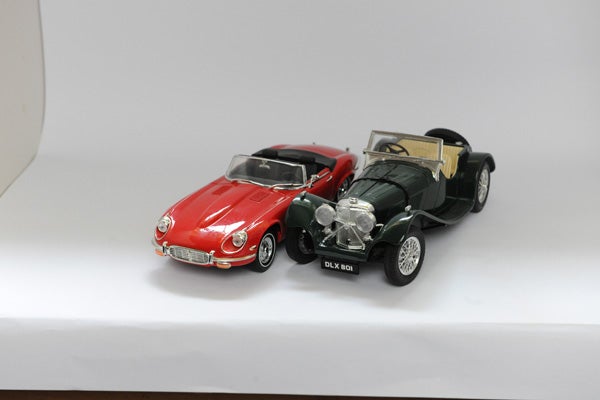
This is the full frame at 1600 ISO.
—-
”A range of general test shots are shown over the next two pages. Unfortunately there are no full-size downloadable pictures today, because the huge file sizes from this 24.5MP monster would trash our bandwidth. ”
—-

Here’s the usual picture-postcard view of Sidmouth sea front for direct comparison with other DSLRs.
—-

Compare the level of detail in this full magnification crop with other full-frame DSLRs, such as the Canon EOS 5D MkII and the Sony Alpha A900. There’s not much in it, but I think the Nikon has the edge.
—-
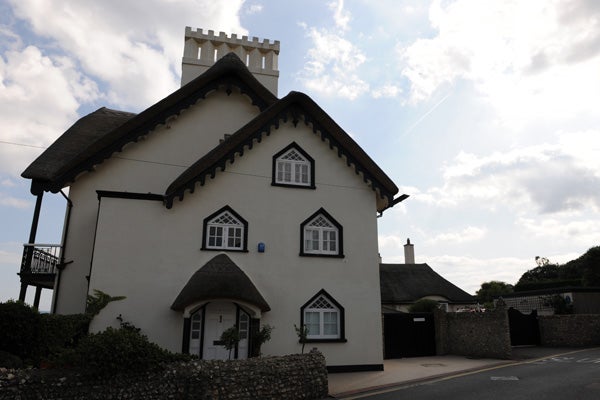
Even with the D-Lighting feature turned off the D3x still copes well with strong backlighting.
—-

Colour rendition is bright and well saturated.
—-
”A range of general test shots are shown over the next two pages. Unfortunately there are no full-size downloadable pictures today, because the huge file sizes from this 24.5MP monster would trash our bandwidth. ”
—-

Subtle colour variations are captured smoothly.
—-

Exposure metering is extremely reliable.
—-
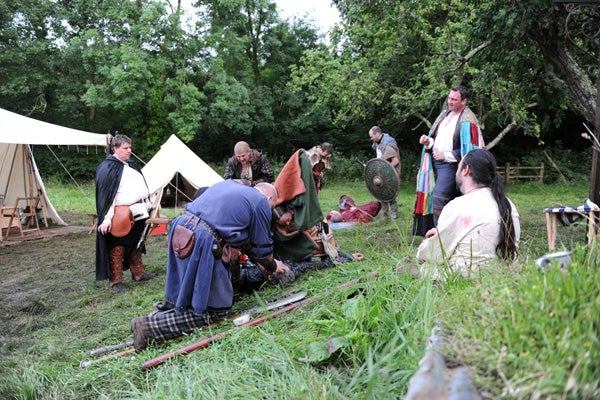
The D3x also has a handy optional time-travel feature, very useful if you’re on a tight deadline, but be careful when setting it up because it’s quite fiddly, and it’s very easy to overshoot by a few millennia.
—-
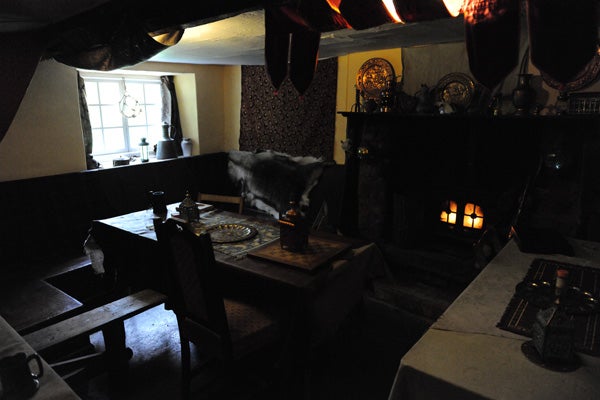
Fortunately the D3x’s battery duration is excellent, because I don’t think they had anywhere to plug the charger in. This shot was taken at 6400 ISO in near darkness.
—-
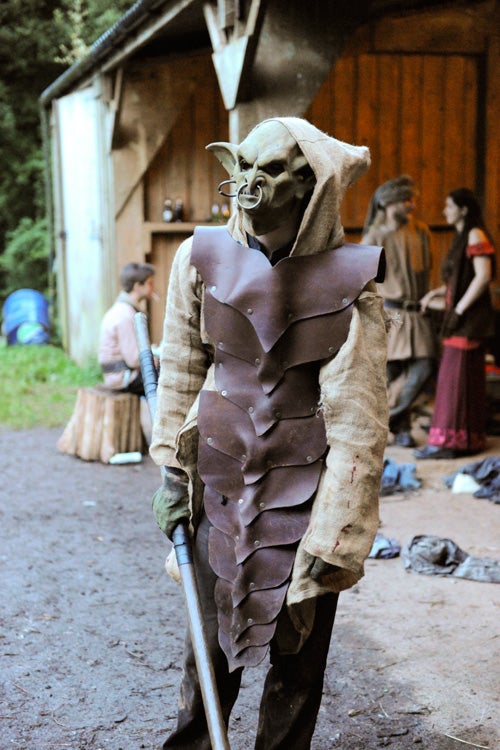
While wandering about in the early iron age I bumped into one of my own distant ancestors. Luckily I was able to resist the temptation to kill him just to see what sort of temporal paradox would result. This was also shot at 6400 ISO in near darkness.
—-
Trusted Score
Score in detail
-
Value 8
-
Image Quality 10
-
Build Quality 10
Features
| Camera type | Digital SLR |
| Megapixels (Megapixel) | 24.5 Megapixel |
| Optical Zoom (Times) | Not Applicablex |
| Image Sensor | CMOS |
| LCD Monitor | 3 in |
| Flash modes | Accessory Shoe |
| Memory card slot | CompactFlash (CF) Card, Microdrive |

